You may not find this terribly rewarding unless you're included here, so this is a good time for casual and random browsers to turn back before they get too caught up in the sweep and majesty of the proceedings and can't let go.
We're not based in Europe anymore, and we've struggled through the covid-19 lockdowns like everyone else, so we haven't set foot in Italy since February 2019. Now we'll be making up for lost time with mad sightseeing, but missing the cats sorely all the while.
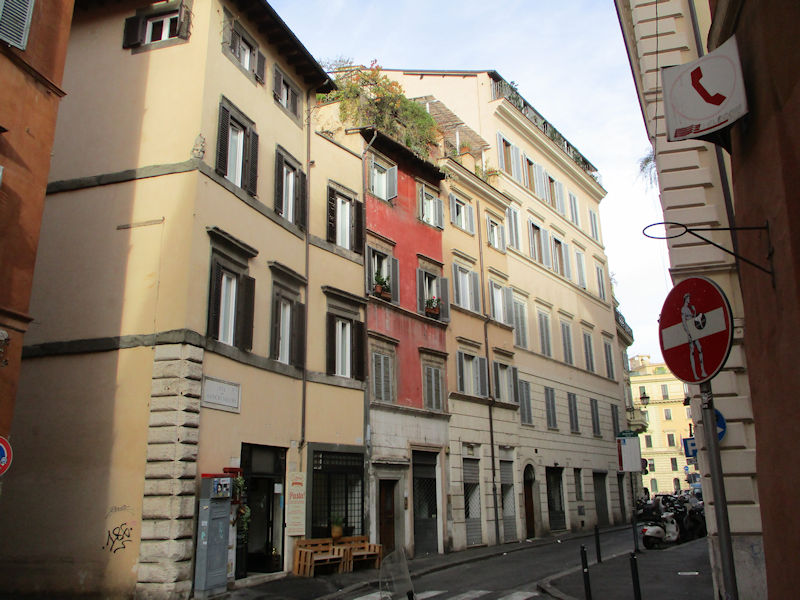
We're heading back towards the Piazza Venezia, 12 November, bound for a visit to the Palazzo Colonna just two blocks up from the central square. This is the Via dei Banchi Vecchi, one block up from our accommodations on the Via Giulia, bound for . . .

. . . the nearest reliable bus stop. That pharmacy down the road was also our nearest reliable source of over-the-counter meds.

From the Piazza Venezia we merely hike a block and a half up the Via IV Novembre to the Via della Pilotta, here, with the entrance to the enormous Palazzo and Galleria Colonna extending along the left side and the family's commodious gardens on the right, across the four footbridges between them (that's three of them; we're standing on the fourth one).
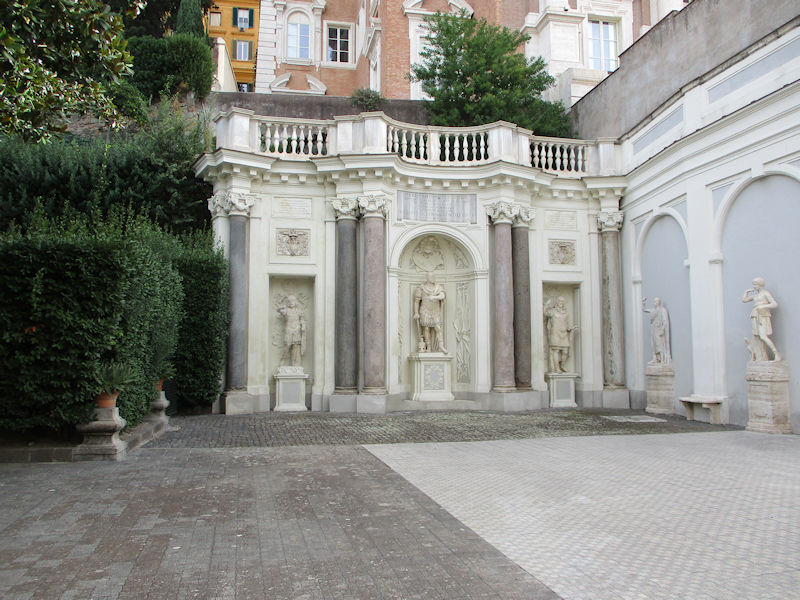
First, a look at the gardens, the 'Giardino di Palazzo Colonna sul Colle del Quirinale'. The columned aedicule or mini-chapel on the far side commemorates three outstanding Colonnas, Marcantonio in the centre, who was the chief commander of the victorious forces at the Battle of Lepanto (1571), and Fabrizio and Prospero beside him.
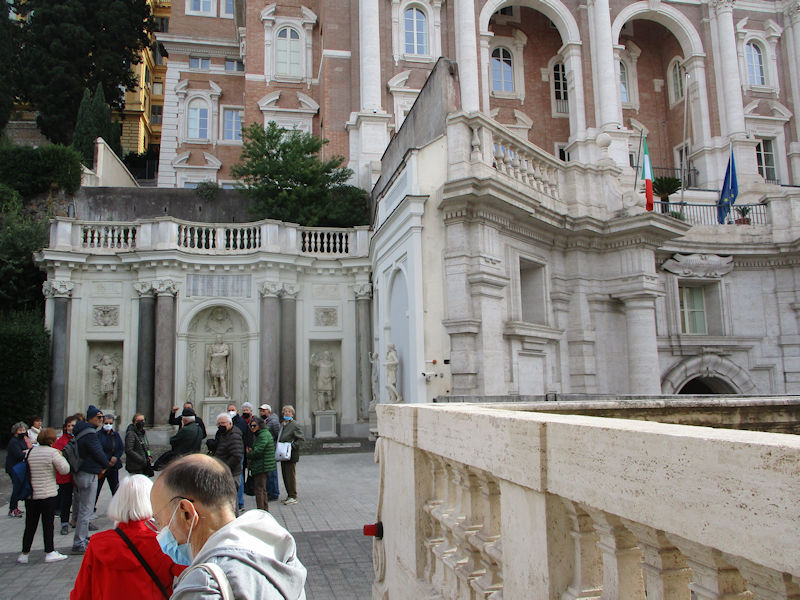
We're over the first of the little bridges and trembling with anticipation.

This building just up the hill on the far side is the Palazzo INAIL (the National Institute for Occupational Accident Insurance), inaugurated by Mussolini in March 1932 (it was originally INFAIL, but the 'F' was removed with the end of the Fascist government). The Institute's HQ is now in the INAIL Tower, formerly the Alitalia and then the IBM Towers, one of the tallest buildings in the city.

The gardens extend some 120 meters along the way, and . . .
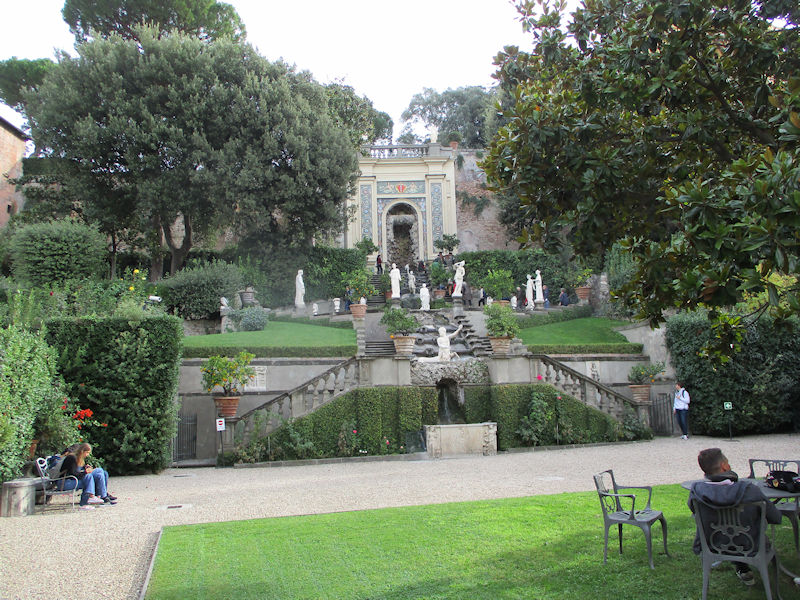
. . . they get really interesting towards the far end. That's looking up the Quirinal Hill; the wall at the top, with the grotto embedded in it, leads over to the Montecavallo Gardens, attached to the Scuderie del Quirinale, the former stables (across from the President of the Republic's residence) that now hosts art exhibitions. We visited a fine Caravaggio exhibition in the Scuderie in 2010 and another of Filippino Lippi in 2011.
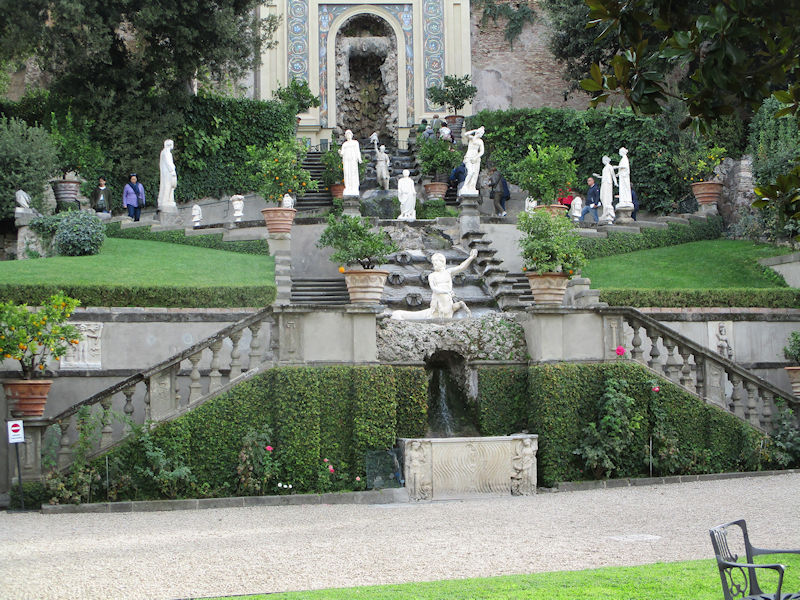
When the Colonna family first began their residence here in the 13th century, they fortified the hillside for defensive reasons. The Cardinal Ascanio Colonna organized the terracing of the hill in the late 16th/early 17th century, with the creation of the monumental fountain just up the stairs, and the four bridges were added in about 1710.
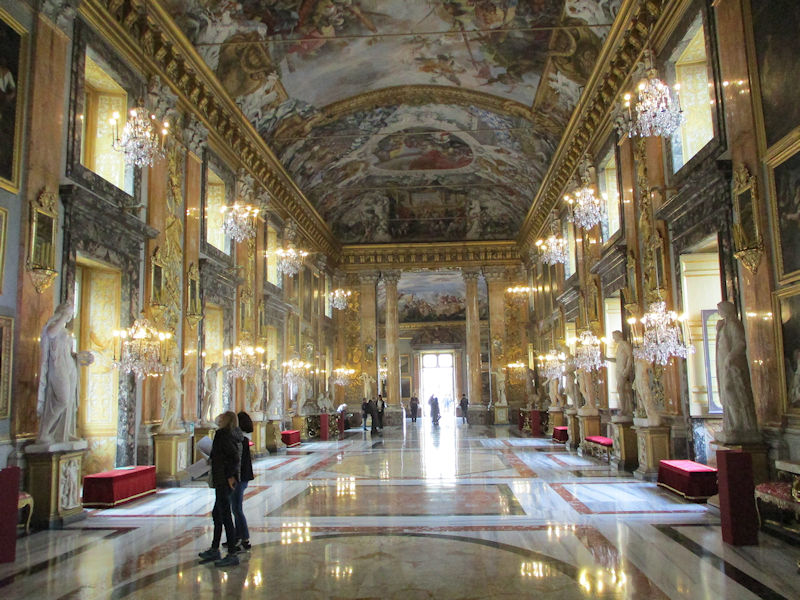
Here our tour of the Gallery begins, in the Great Hall, but one of the most unusual features is right here behind us . . .
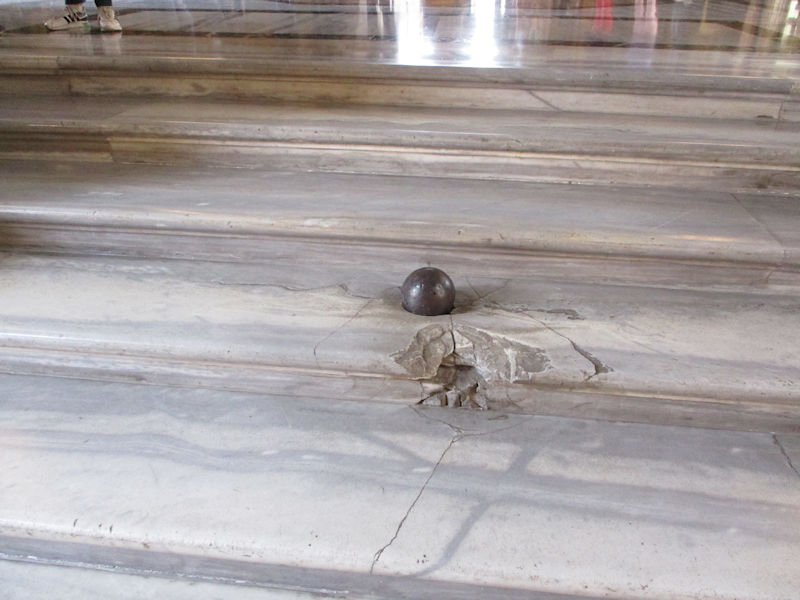
. . . the Colonna Cannonball. When, after the liberal uprising of 1848 and declaration of a Roman Republic led by Mazzini and others in January 1849, instituting freedom of religion and other social reforms, the Emperor of the French Napoleon III sent the French army in April to put the papal autocrat Pius IX back on his throne. In the course of the siege throughout June, directed against local citizens backed by Garibaldi's 'Italian Legion' of volunteers, the French cannoneers inadvertently dropped an awkward surprise right here. Where it remains.
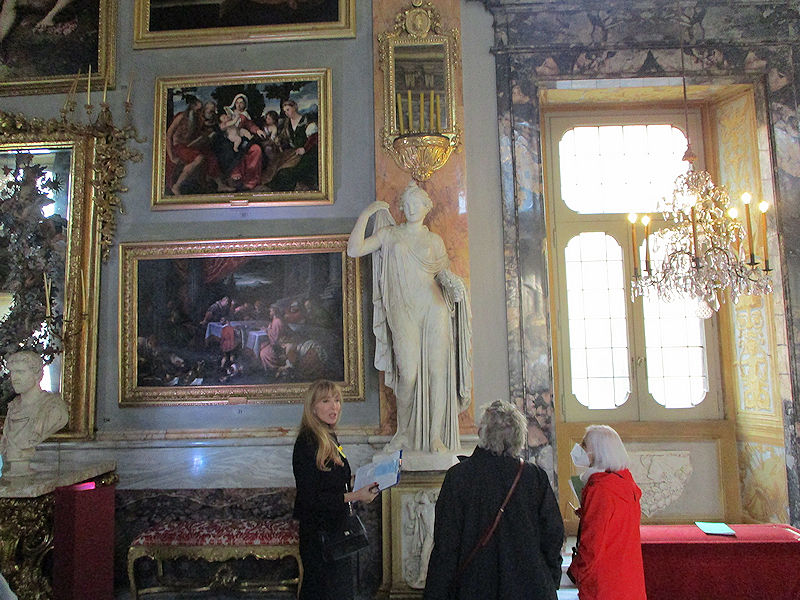
Kristin and Teny with our pleasant and well-informed guide

Two classical statues without their trousers. The Colonna family emerged, despite claims of Lombard and late Roman heritage reaching back to the founding of the Julio-Claudian dynasty in the 5th century BC, with serious ecclesiastical careers beginning in 1206. They were consistently opposed to the temporal claims of the papacy and were therefore mostly pro-Emperor Ghibellines, with from the mid-13th century a centuries-long feud with the pro-papal Orsini family, heads of the Guelph faction. These two families, each with its assorted allies over time, contested for power against each other and the papal forces, and often brought chaos to the city and much of Italian countryside throughout the Middle Ages and into the early modern era.

The Colonna had fortified residences in this part of the city from the 12th and 13th centuries onward (as well as all over the regional countryside), but it was Oddo Colonna, as Pope Martin V (r. 1417-1431), who began this present palace, with additional buildings that the della Rovere Pope Julius II restored in the early 16th century (as they'd been confiscated in earlier squabbles) to his niece's husband, Marcantonio I Colonna. Rebuilding in the 16th and 17th centuries converted the various structures into the present stately residence, with the Galleria wing added in the late 18th.
Members of the Colonna family still reside in a private part of the palace.
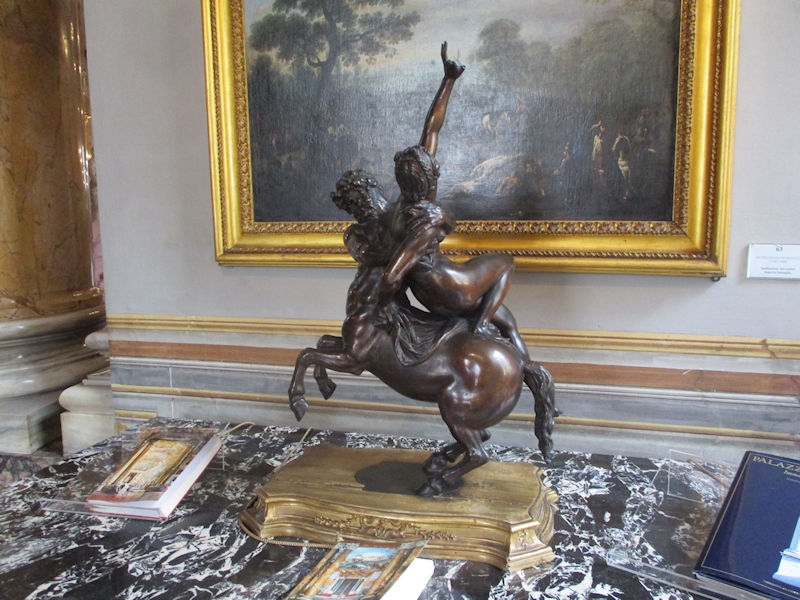
The artworks here are not all Madonnas and Saints -- many of the Colonna family had connections with the more violent life of the soldier. Amongst a legion of cardinals (and one pope), diplomats and administrators, there were a host of military commanders (some of them freelance mercenary captains), amongst whom the most significant are probably these: Ludovico Colonna (1390-1436), condottiero (leader of a mercenary band); Giordano (d. 1424), brother of Pope Martin V, captain under Muzio Attendolo Sforza; Fabrizio Colonna (c.1450-1520), general in the Holy League (& father of Vittoria Colonna [poetess & friend of Michaelangelo; see Targoff, Renaissance woman: the life of Vittoria Colonia (2018)]; Prospero Colonna (1452–1523), part of the Holy League; Marcantonio I Colonna (1478–1522), condottiero; Pirro Colonna (1500–1552), commander under Emperor Charles V; and Marcantonio II (1535–1584), a commander at the naval Battle of Lepanto, 1571.
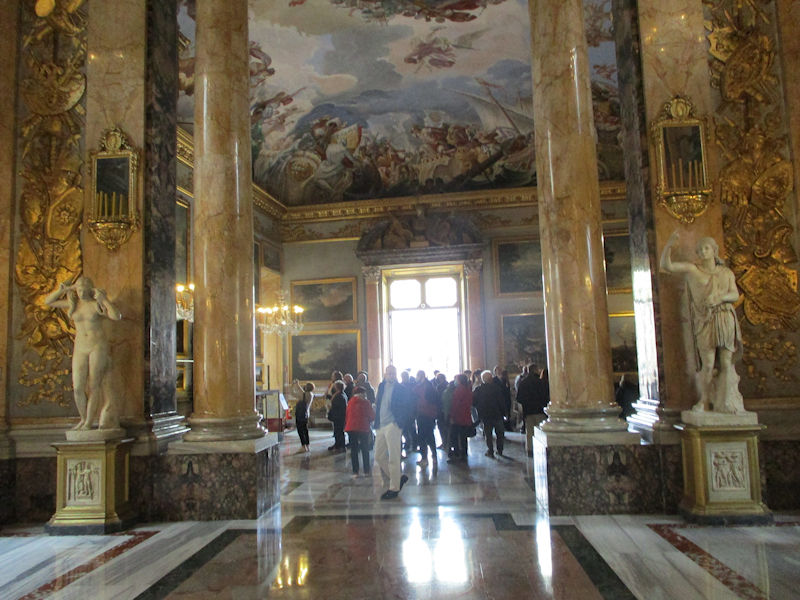
We're leaving the Great Hall now, and entering the Hall of Landscapes.

There's an amazing number of fine landscape paintings and frescos here, much of it by the influential Roman painter Gaspard Dughet, like this one. We've never heard of this fellow and are glad now that we have.

This is a display copy of a selective history of the family, written by Prospero Colonna (2010), which on inspection looked really interesting, but is presently listing at $80 on Amazon. That's the Colonnas' only pope, Oddo or Oddone (1369-1431), as Pope Martin V (1417-1431), who was involved in some significant issues in his time. During the 'Western Schism', with two & then three competing pope-claimants, as a Cardinal he backed John XXIII and was excommunicated for that by Gregory XII, but at the Council of Constance he helped to depose Antipope John in 1415 and in the battles between the two other claimants, he emerged with his own election in 1417.
As pope, he was able (at first) to make beneficial deals for his relatives with Joanna II, Queen of Naples (they later quarrelled); excommunicated the Hussite Czechs; declared crusades against the Czechs and the slave-trading north Africans and the Ottomans (none of which came off); and invented a way round the Church's prohibition against monetary interest in 1423 by reclassing loan interest as purchased annuities. He died at 62 and now resides in the Basilica of St John Lateran.
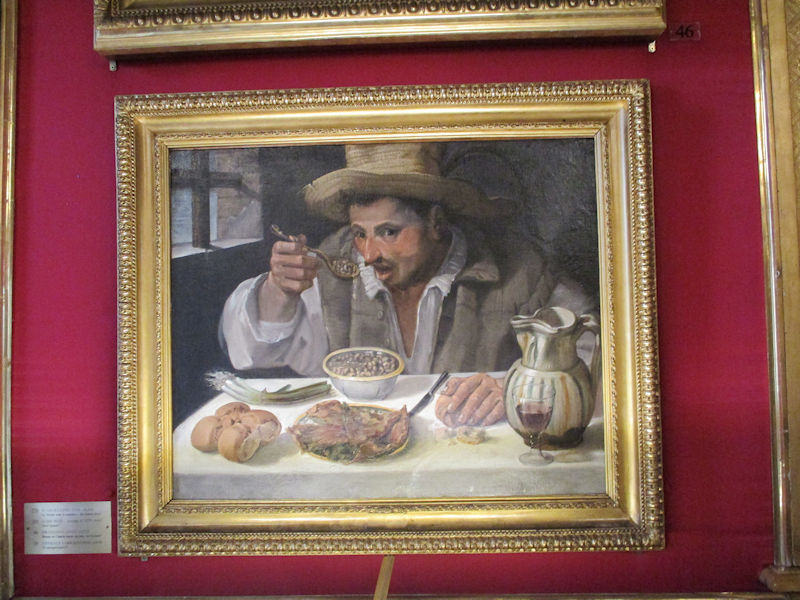
A classic -- 'The Bean Eater' (Mangiafagioli), by the Baroque painter Annibale Carracci, probably painted in 1583–1584.
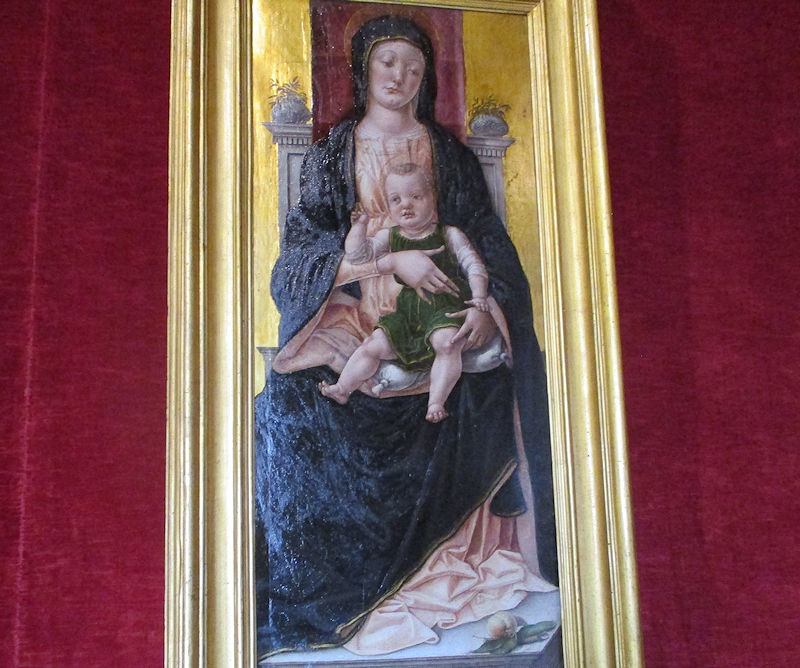
'Madonna and Christ child enthroned, with benediction', listed here as by Bartolomeo Vivarini, late 15th century (We collect funny Christ childs.)

Here's a colorful Madonna with wee little John the Baptist and the Christ child, along with St Andrew and Catherine of Alexandria, with her torture wheel and martyr's palm, by the Mannerist painter Girolamo Siciolante da Sermoneta, mid-16th century.
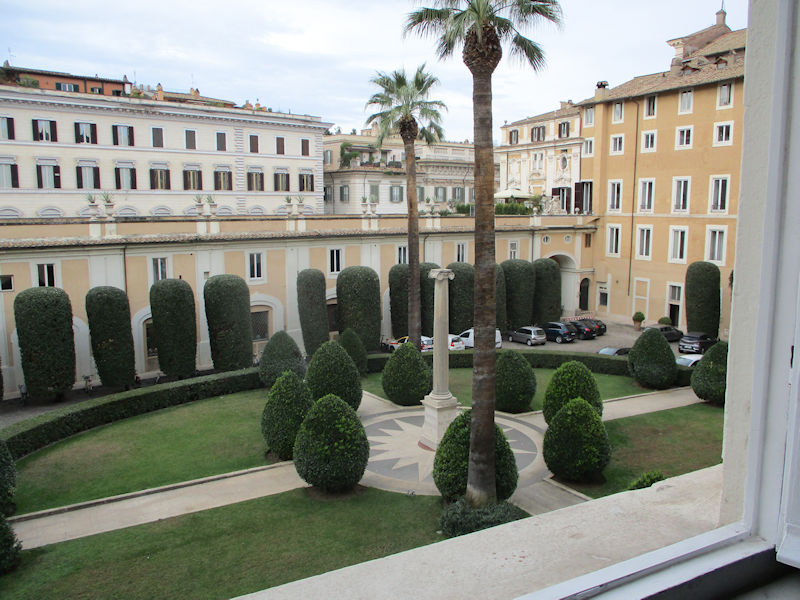
When we first visited the Galleria Colonna in 2006, it was a strictly NO PHOTOS establishment, so we had to sneak one from this same vantage in order to illustrate the windows of Kristin's son's apartment across the street.
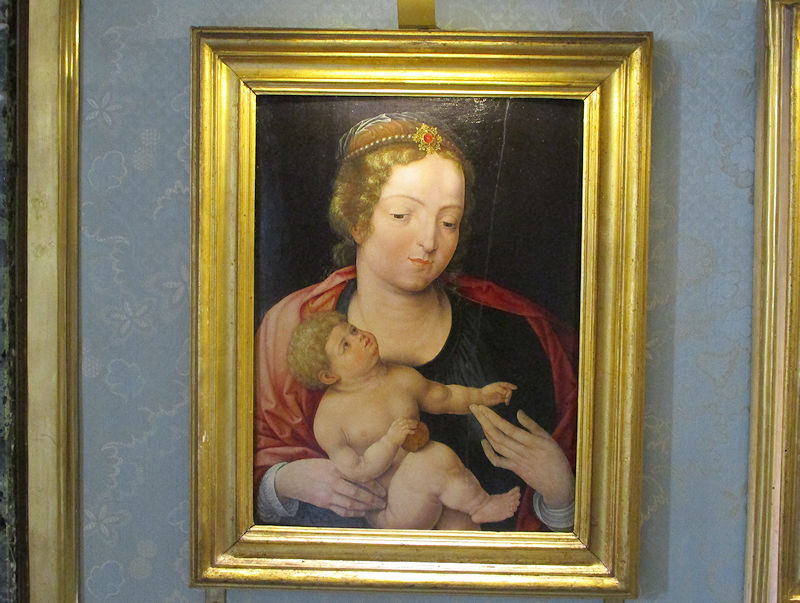
The Madonna with a cute little curly-haired Jesus, by the 'Circle of Mabuse', that is, of Jan Gossaert (c.1478-1532) from the Low Countries, who traveled to Rome in 1508-9 and returned to the north with Italian influences known there as 'Romanism'. This one doesn't seem, based on a Google search, to be as convincing as his own works.

This playful scene is attributed to Lucas Cranach the Elder
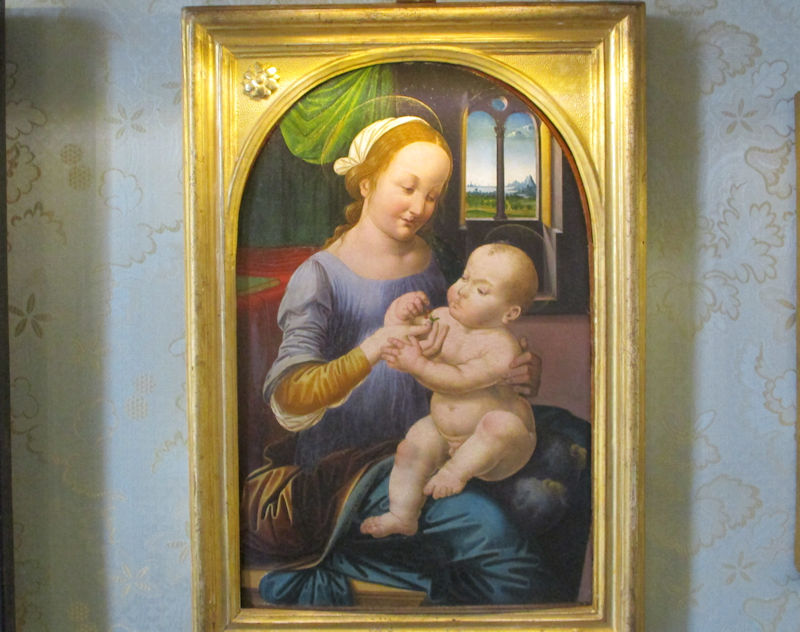
A Christ child who obviously gets enough to eat but wants more. Attributed to Pietro del Donzello (1452-1509)
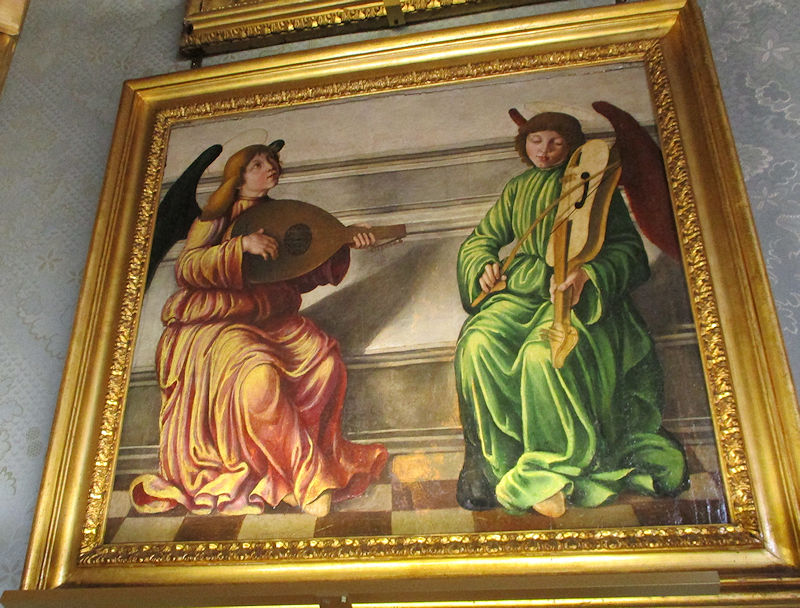
Identified as 'Two Musician Angels', by 'Florentine Painter - end of the XV century'. Two very colorful, overdressed musician angels, be it said, playing 15th century earthly instruments.
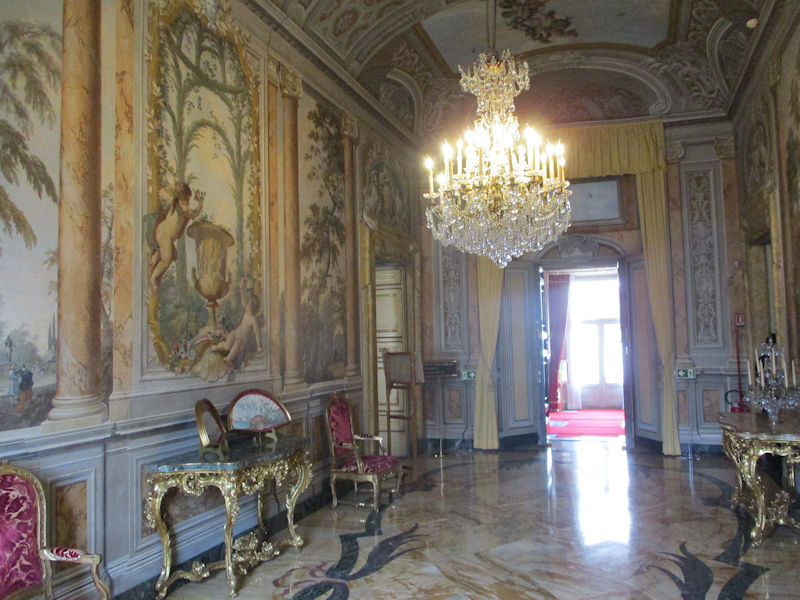
We're continuing through the labyrinth of assembled collections.
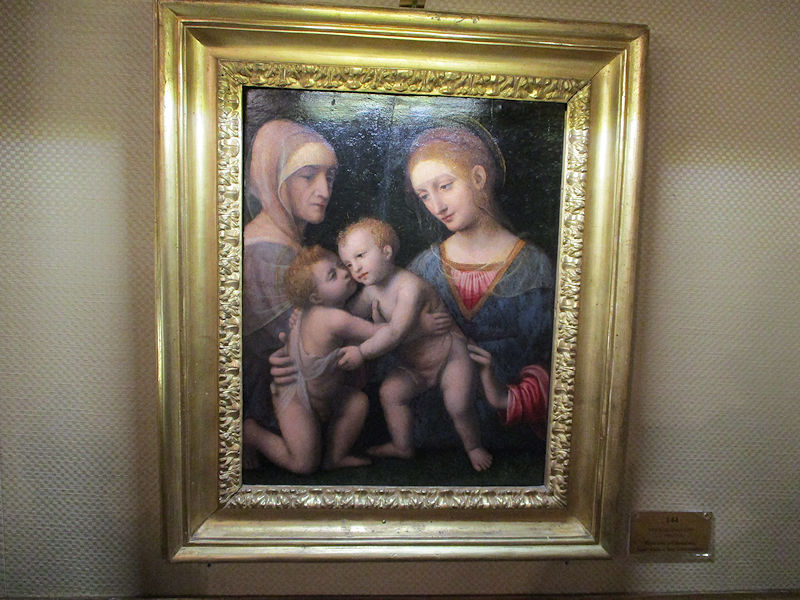
Now that's so cute! 'Virgin with child, St Anne and the young St John', by Bernardino Luini (c.1480-1532), working in northern Italy except for a brief time in Rome in 1521. He's said to have worked as part of Leonardo's circle, and is known for graceful female figures like this Madonna.
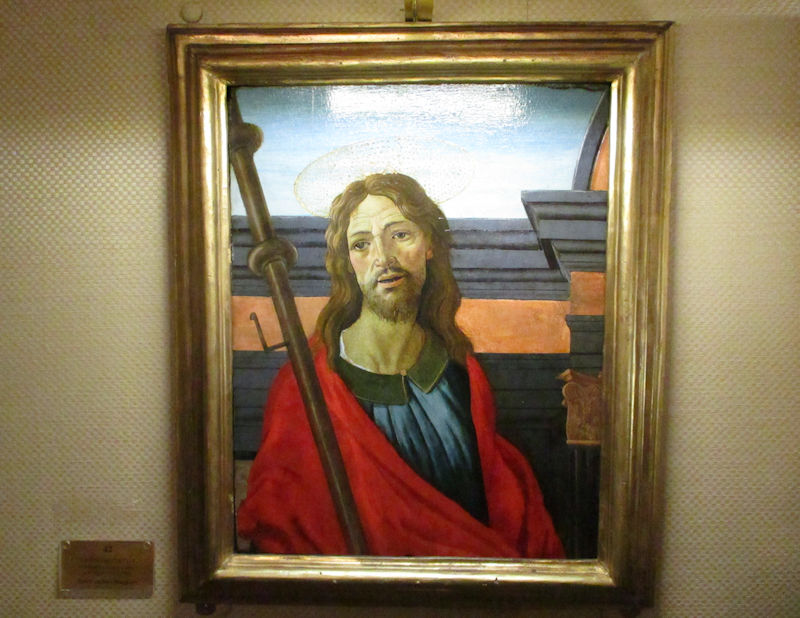
A very striking figure, identified as St James the Greater, by Botticelli and his workshop
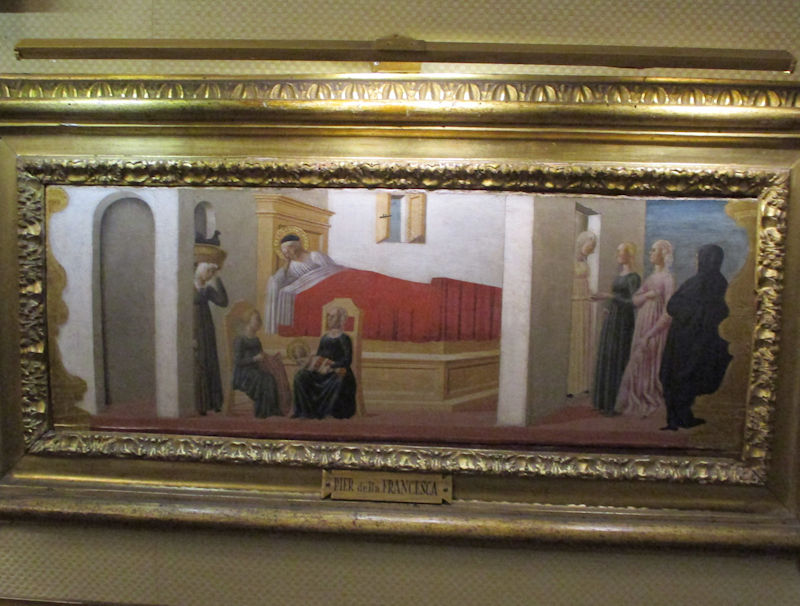
An unremarkable work attributed to Piero della Francesca
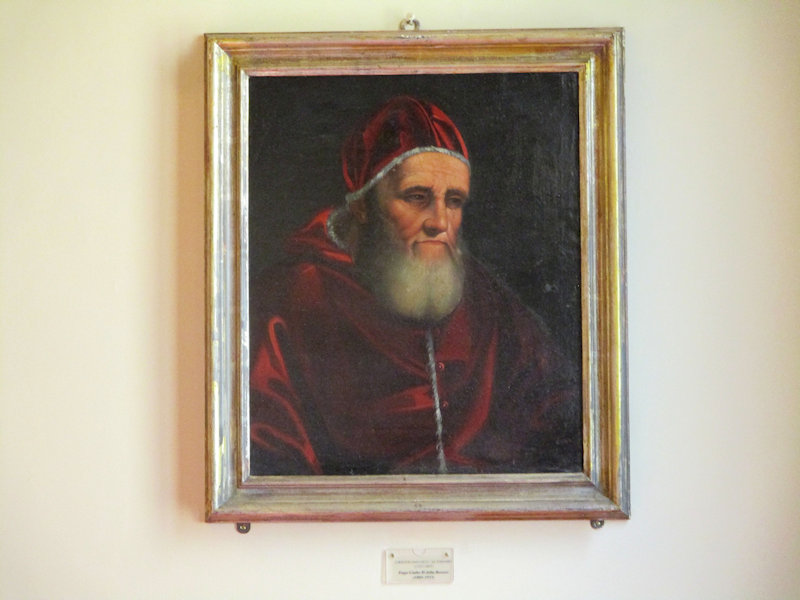
Here's everyone's favorite 'Warrior Pope' (also called the 'Fearsome Pope'), Julius II della Rovere (r. 1503-1513), very active in the Italian Wars and in working to reclaim city states to direct papal authority, sometimes leading the papal army himself. In 1506, he laid the stone for the new St. Peter's Basilica to be carried out by Bramante et al, as well as establishing the Vatican Museums, and in the same year founded the institution of the papal Swiss Guard. He also seems to have gone a long way to reconciling the Orsini and Colonna families, after so many years of their feuding, with a papal bull in 1511.
There are other originals and several copies of this classic portrait of Julius II by Raphael, and this seems to be a good copy of the head shot, but it doesn't appear to be listed amongst the known copies.
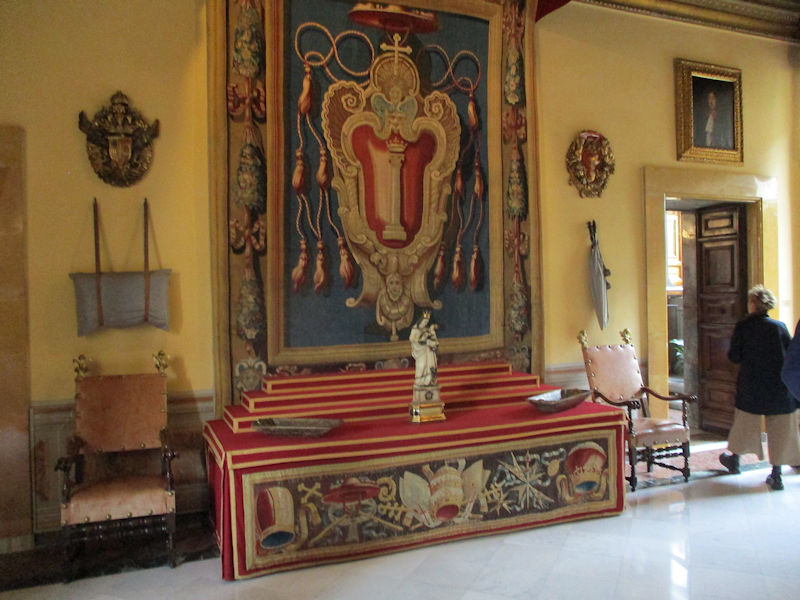
That's a version of the Colonna coat of arms, all based around that ancient Roman column in the centre, which provided the family name 'Colonna' -- the original column is out in the garden courtyard.

An attractive specimen of early intown transport for the privileged -- how fun it would be to get carted round like that, with one man in front and another in back, and four sturdy fellows alongside to pry us out of it again. Possibly requiring tools.

An attractive harbor view of Naples by Gaspar van Wittel (c.1653-1736), a Dutch painter who worked in Italy from 1674 on. He's said to have helped to develop the genre of topographical painting known as veduta and turn that into a specialism in Italian art (think of Canaletto).
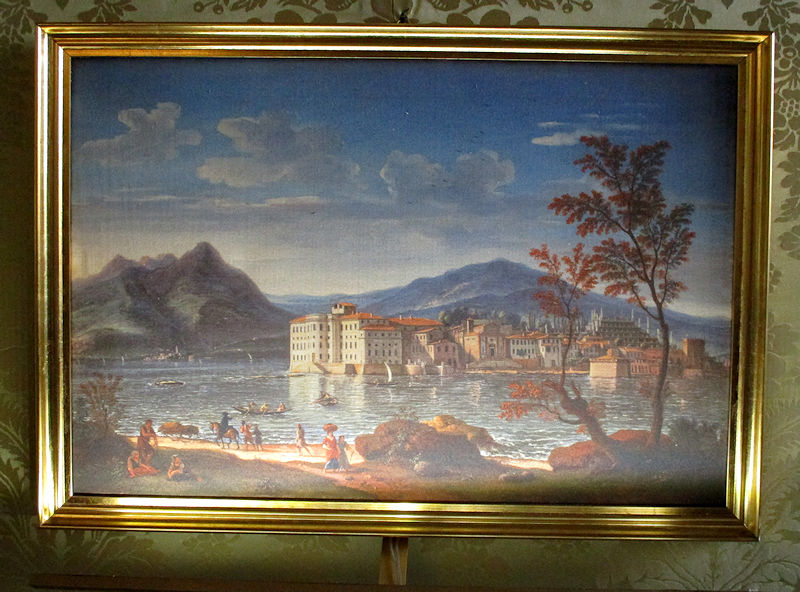
Another by van Wittel, this is the beautiful Isola Bella in the Lago Maggiore in northern Italy.
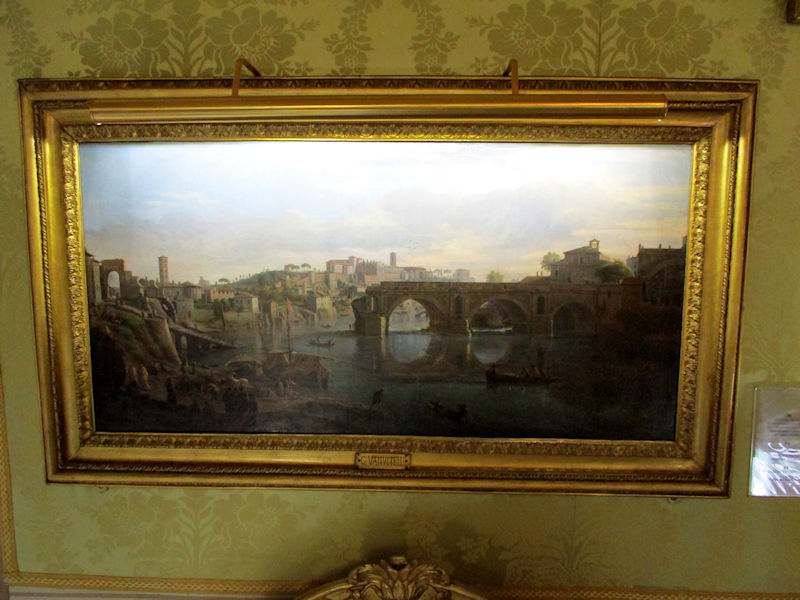
Same artist, the Ponte Rotto and the Aventine Hill in Rome, made in the 1680s
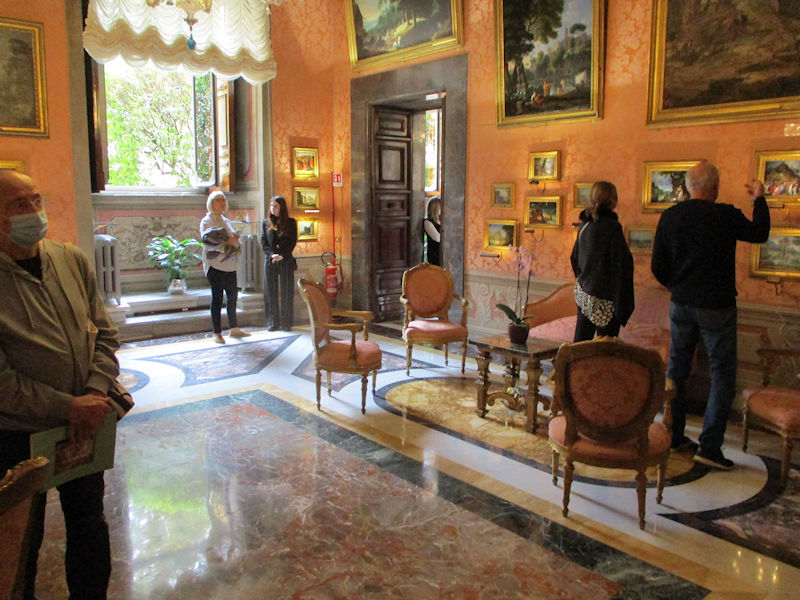
Joe's reflective response
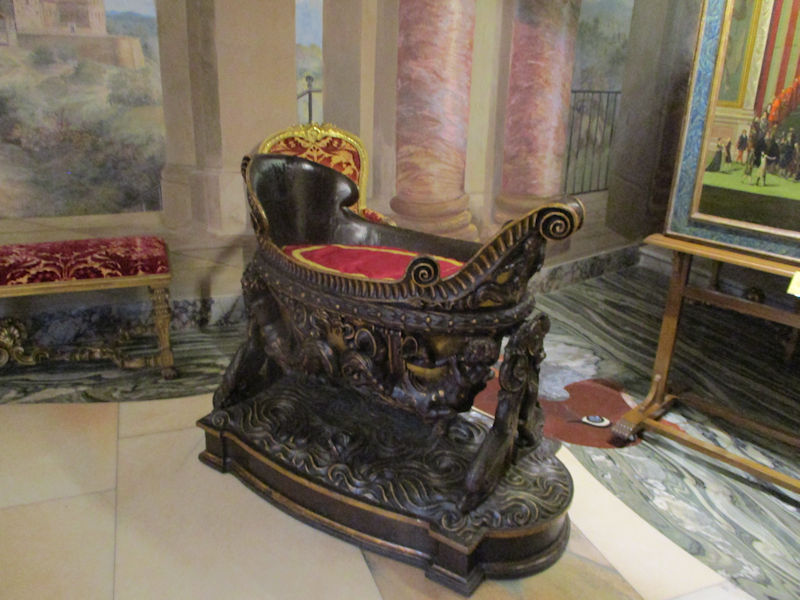
How cute!

A guided tour in progress as we slip silently past
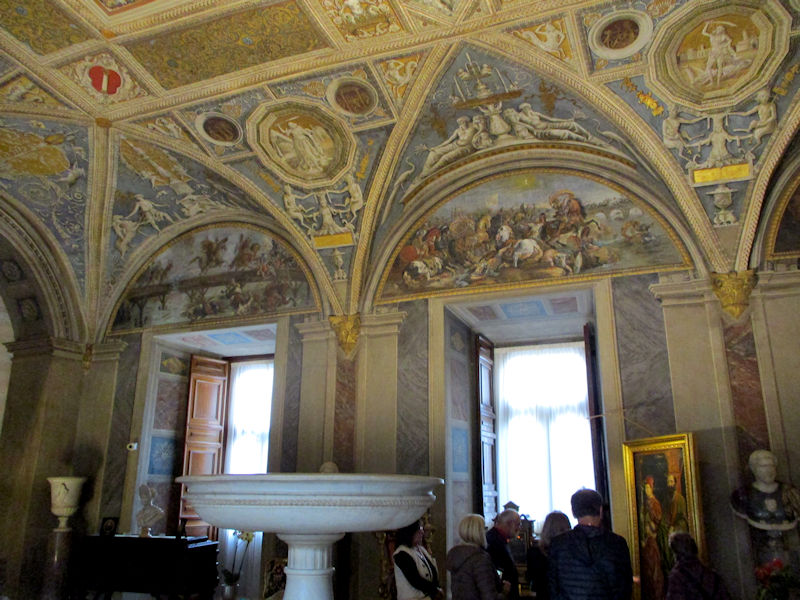
It's hard not to fear that living amongst all this inspired decoration everywhere might begin to get on your nerves after a few months.

We've pretty much been through the best of it now, though without the appreciative care it deserved. And, subsequently, we've pretty much decided that we're going to have to give up on this little Canon PowerShot in future.
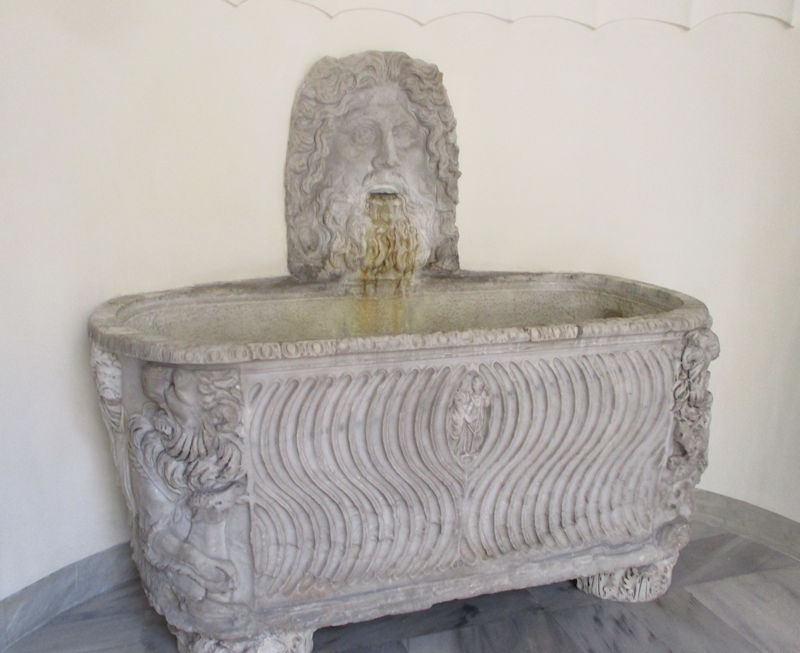
After a long night
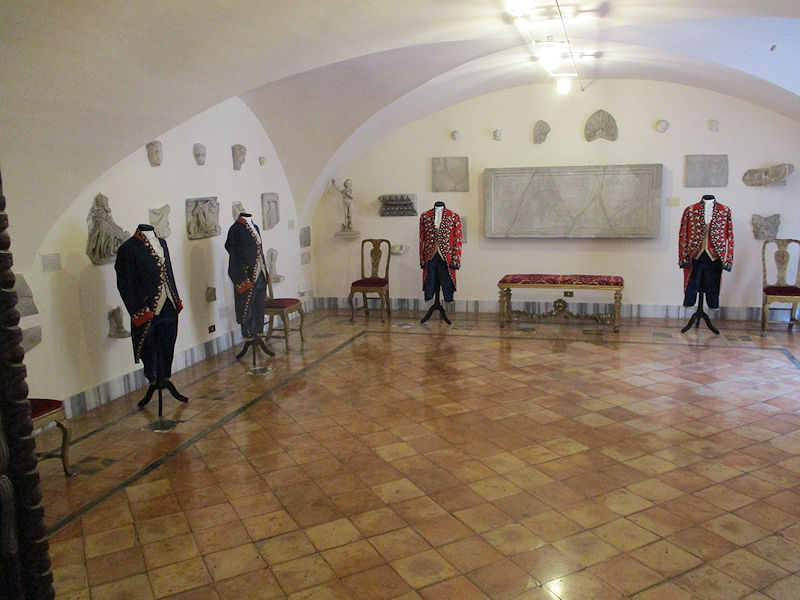
Out the back door
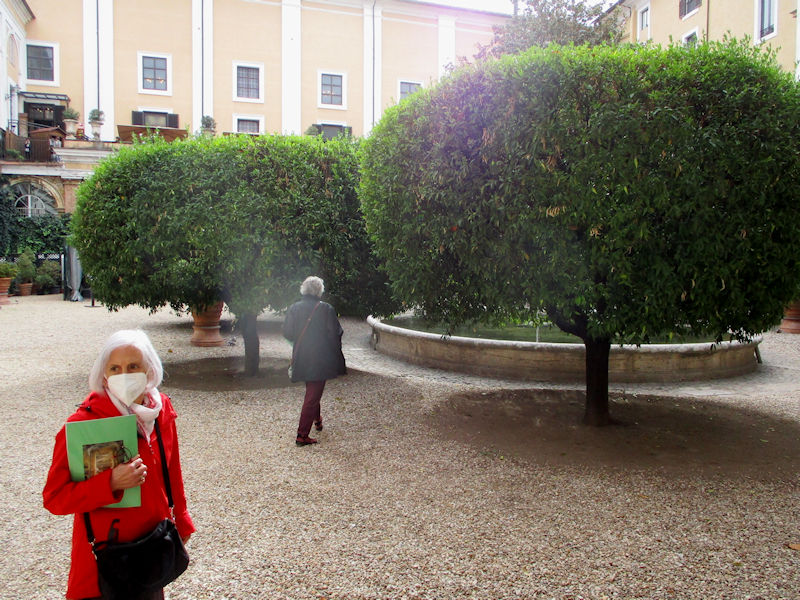
Teny and Kristin heading for the exit and waiting for us, respectively

We're headed home -- that's a glance back up the Via IV Novembre at the Museo delle Cere, the Wax Museum, built into the southern wall of the Colonna palace's city block façade, next to Tartuffo's Market and the Nag's Head Scottish Pub Roma, with the Palazzo INAIN on the horizon.
 Dwight Peck's personal website
Dwight Peck's personal website









































































